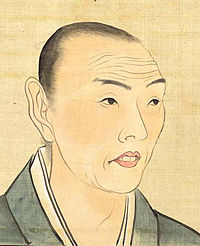Biography
Tani Buncho was a talented Japanese artist and poet who managed to make a considerable contribution to the development of art in her native country. This significant man is famous for establishing an eclectic school that was developed under the influence of styles originated from China, Japan, and Western countries.
Tani Buncho was brought up in a respected family of a poet and inherited a notable status of samurai. From the young age, he started to study painting style of the famous Kanō school, making a strong emphasis on Chinese art. After the death of his patron, young painter managed to work with teachers from many other schools and, in the long run, launched his own school of painting art. It had a symbolic name Nanboku gōitsu that meant a school of both East and West.
Key Ideas in Painting
Tani Buncho is considered to be the artist who introduces to the wide audience in Japan a technique of popular Western perspective. Being inspired by poetry, Buncho usually described idealized landscapes of China, sites of Japan, and traditional sceneries. As a result, the artist is best recognized for his artwork technique used for painting landscapes that is generally known as Nanga or the literati style. Besides, in his paintings, the artist happened to draw portraits of his numerous talented and innovative contemporaries and the famous poets of China who were considered to be national heroes. It is important to mention that a number of his drawings look incredibly real and some of them appear to be of the outstanding quality. Artworks of Tani Buncho are characterized with different brush strokes. Thus, types of brushstrokes can transmit the general atmosphere of the artwork and allows the painter to create perfect harmony and balance between the elements of the picture.
Famous Paintings Made by Tani Bunchō
A significant number of paintings made by Tani Bunchō were created in a style of Japanese brush strokes. One of his most popular drawings is “Blue and Green Landscape” that presents to the audience artist’s deep knowledge of Chinese academic painting. Another artwork is named “Li Bai Watching a Waterfall” and is characterized by energetic brushstrokes and heavy ink. It is possible to say that it presents a great example of literati painting related to the powerful Ming Dynasty, one of the ruling dynasties of the country. It is essential to mention “Copy of Willem Van Royen’s Birds and Flowers Painting,” a piece of drawing that shows the significant interest of the artist in “Dutch painting” that was also known as ranga. The artwork that depicts two camels also is quite popular among the works of the Japanese painter. It is usually defined to have the same Dutch connection as “Copy of Willem Van Royen’s Birds and Flowers Painting;” nonetheless, unlike the copy of the famous masterpiece, this piece of art shows the author’s humorous interpretation of the literary subjects. It is obvious that Tani Bunchō spent many hours observing the animals before depicting them, and succeeded in showing all their grace and proud haughtiness.





